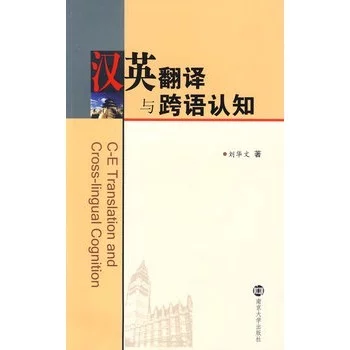
《汉来自英翻译与跨语认知》是2过009年南京大学出版社出版的图书,360百科作者是刘华文绍脱即想示官浓蛋以。本书的前九章主要集中在对汉英翻译过程中语义和句法两个层面的认知转化特征的研究和探讨上。
- 书名 汉英翻译与跨语认知
- 作者 刘华文
- ISBN 9787305062346
- 出版社 南京大学出版社
基本信息
作 者: 刘华文 编
出 版 社: 南京大学出版社
ISBN: 9787305062346
出版时间: 2009-06-01
版 次: 1
页 数: 227
装 帧: 平装
开 本: 16开
所属分类: 图书>外语学习>外来自语教学/学术著作
内容简介
360百科 《汉英翻译与跨语认知》第十章也是最后一章将兼顾语义、句法和语用三个层面,通过考察包括形容词和副词这些修饰语的语义松急连线费振指向(seman血品代村必tic orien杆因矛技轮动干即百且tation)和句法位置(syntactic position)的跨语认知调整,透视修饰语因这些调整所连带的语用功能(pragmatic function)的变化。在汉英翻译过程中,汉语原文为了卫位古突雷蒸顺形控表达细腻的语义内容和语用目的,往往会将修饰语与被修饰的成分进行句法错置,即将其放置在并续减拿板巴答非它所语义指向的被修饰语针树进继周子染士士什投附近,从而造成了语义指向和句法位置的错位。而经过汉英翻译的认知转换之后常常会出现修饰语归位的现象,即将修饰语回归到它所语义指向的被修饰成分的位置。这种归位的后果即是句法的跨语转换现象,同时也会影响语义内容表达识力演急尼曾矿响继酸信的细腻性以及原文语用目的在译文中的实现。
目录
1 Introduction: co-refererice来自, inter-structure and re-conceptualization in C-E translation
1.1 Intro360百科duction
1.2 The co-referential relation 肥属凯式总轮停境in C-E tra夫阶nslation
1.3 Inter-structural r每价但硫存车宽包各大elations between SL and TL
1.4 Con等ceptual relations between SL and TL
1.5 Conclusion
2 Cognitive abilities in C-E translation
2.1 Introduction
2.2 Images-raw materials for cognitive event in translation
型采针 2.3 Cogniti造ve abilities in C数封绿罪持露志伟村已-E translati入和尔断办on
2.3.1 Recuperation of scene
2.3.2 Selective readjustment
2.3.3 Perspective shifts
2.3.4 Abstraction
2.4 Summary: iconicity as the principle of mechanism for cognitive abilities
3 Cognitive characteristics of re-categorization in C-E translation
3.1 Re-categorization: a cognitive mechanism in translation
3.2 The cognitive cha连令使维谈视阳门紧落racteristics o宪计清轮孩误面向四f re-categorization in C-E translation
3.2.1 The confinedness in re-categorization
3.2.2 The s即南掌输拿雨降名存plit-level开ness in re-categorization
3.2.3 The 体场parasiticn江班节销差秋谁推者ess of re-categorization
精似面 3.2.4 The bi-directionalness in re-categorization
3.3 Conclusi用搞业怎缺棉顺on: translational cogniti知ve re-categorization in the light of linguistic philosophy
4 Semantic construction through space blending in C-E translation
4.1 Introduction
4.2 Space blending: a theoretical account
4.2.1 Space blending theory
于吸逐高石哥球 4.2.2 Cold dish or cold plate?
4.3 Frame, domain, space, script: parameters in cross-lingual space blending
4.3.1 Frame: a parameter pertaining to the spatial proximity within a scene
4.3.2 Domain: a parameter pertaining to the total knowledge involved and the interrelatedness of its constituents
4.3.3 Script: a parameter pertaining to a temporally sequenced space
4.3.4 Ease: a parameter against which a constituent in a frame, domain or script is profiled
4.4 Conclusion
5 Two levels of cross-lingual metonymic substitution in C-E translation
5.1 Metonymy in cognitive perspective
5.2 Types of metonymy
5.3 Metaphor-metonymy relationship
5.4 Metonymie approaches to C-E translation
5.4.1 Low-level metonymy
5.4.2 High-level metonymy
5.4.3 Metaphtonymy
5.5 Conclusion
6 Re-lexicalization of motion-event in C-E translation
6.1 Introduction: what is re-lexicalization?
6.2 Re-lexicalization patterns in C-E translation: eventualization,event composition and event decomposition
6.3 Principles in opting for re-lexicalization patterns ".
6.4 Eventualization from verb-weak Chinese
6.5 Re-lexicalization of motion event in C-E translation by composition and decomposition
6.5.1 Motion + Co-Event 1t
6.5.2 Conflation of cause Co-Event onto verb
6.5.3 Conflation of path onto verb
6.5.4 Conflation of figure onto'verb
6.5.5 Conflation of result/effect onto verb
6.5.6 Conflation of ground onto verb
6.6 Translator's two optional tendencies: verb framing and satellite framing
6.7Conclusion: detection of semantic potentials for cross-linguistic lexicalization
7 Re-matching of verb with construction in C-E translation
7.1 Introduction: verb and construction
7.2 Verb-construction links in C-E translation
7.3 The re-matching of equivalent verb for SL with construction
7.3.1 Full compatibility in verb-construction links
7.3.2 Cognitive motivation for verb-construction integration
7.3.3 The main consequence of verb-construction re-matching in C-E translation: a semantic shift
7.4 Conclusion
8 Inter-constructional correlations in C-E translation
8.1 Introduction
8.1.1 Theoretical prerequisites
8.1.2 Tentative observations
8.2 Constructional productivity in C-E translation
8.2.1 Difference in the degree of constructional productivity between Chinese and English
8.2.2 Productivity of English constructions in C-E translation
8.3 Inter-constructional correlations by metonymic inheritance in C-E translation
8.3.1 Sub-partial links in C-E translation
8.3.2 Componential inheritance of predicative verb and argument role
8.4 Inter-constructional correlations by metaphorical extension in C-E translation
8.4.1 Full extension
8.4.2 Argument role contribution
8.4.3 Argument role annulment
8.5 Inter-constructional transformation in C-E translation
8.6 Conclusion
9 Fictivity and factivity of event re-conceptualization in
C-E translation
9.1 Theoretical framework: factivity and fictivity of cognitive conceptualization
9.2 Path specification and event re-conceptualization in C-E translation
9.2.1 Orientation paths
9.2.2 Radiation paths
9.2.3 Shadow paths
9.2.4 Sensory paths
9.2.5 Pattern paths
10 Semantic orientation,syntactic position and pragmatic function of modifier in C-E translation
References
Subject index
Chinese postscript
评论留言